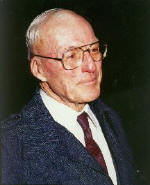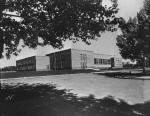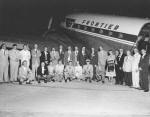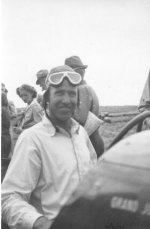
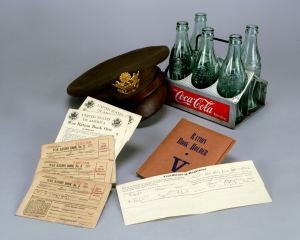
World War II
brought shortages of many commodities, and the government issued ration
books to citizens. Coupons entitled customers to buy allotted amounts of
goods like canned food, meat, butter, shoes and gasoline. Coca-Cola was not
rationed. It was available in its curvaceous glass bottles, not in cans.
Military uniforms were well tailored of durable fabrics, and included
headgear.
This is an Army hat, and soldiers were obliged to wear a �cover.�
The 1940s
World War II engulfed the nation
from 1941 to 1945. Grand Junction contributed to the new Atomic Age which
ended the war. Afterward, the city continued as a part of the national
atomic energy complex. The 1940 population was 12,479, a 21.8 percent
increase through the 1930s, despite the Depression.
